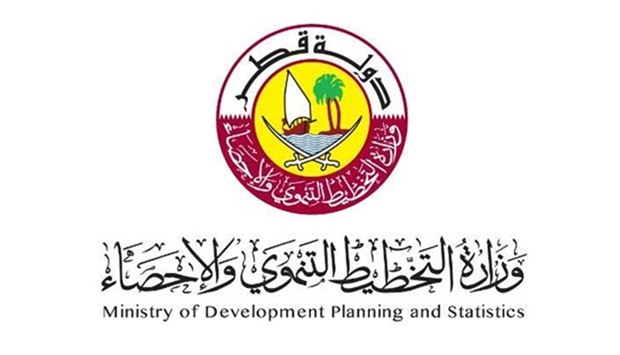Robust hydrocarbons and manufacturing sector helped Qatar's industrial producers' earnings register a double-digit growth year-on-year in November 2018, according to official estimates.
Qatar's producer price index (PPI) – a measure of the average selling prices received by the domestic producers for their output – surged 18.9% on an yearly basis but reported a sharp 5.7% month-on-month decline during the review period, said the figures released by the Ministry of Development Planning and Statistics (MDPS).
MDPS had released a new PPI series in late 2015. With a base of 2013, it draws on an updated sampling frame and new weights. The previous sampling frame dates from 2006, when the Qatari economy was much smaller than today and the range of products made domestically much narrower.
The PPI for mining, which carries the maximum weight of 72.7%, saw a 25.5% surge year-on-year in November 2018 on the back of 25.7% increase in the price of crude petroleum and natural gas and 3.4% in stone, sand and clay.
The mining PPI however tanked 6.2% on a monthly basis as crude petroleum and natural gas prices shrank 6%, even as that of stone, sand and clay was up 0.1%.
The manufacturing sector, which has a weight of 26.8% in the PPI basket, witnessed 6.6% yearly expansion this November owing to a 17% increase in the price of juices, 14% in paper and paper products, 12.8% in other chemical products and fibres, 10.6% in dairy products, 8.9% in refined petroleum products, 5.6% in basic chemicals and 0.3% in grain mill and other products.
Nonetheless, there was a 4.4% reduction in the price of rubber and plastics products, 2.1% in basic metals, and 1.6% each in cement and other non-metallic products and beverages respectively.
The manufacturing sector PPI had seen a 5.2% decline month-on-month in November 2018 as price of refinery petroleum products eased 6.9%, basic metals 5.2%, cement and other metallic products 0.7% and basic chemicals 0.4%; while there was a 1% increase in the price of beverages, and 0.1% each in grain mill and other products and rubber and plastics products.
The utilities group, which has a mere 0.5% weightage in the PPI basket, saw its index expand 2.6% on yearly basis in November 2018 as water and electricity prices had risen 2.6% and 2.5% respectively.
The index had seen a 2.6% shrinkage month-on-month as the 6.9% growth in electricity prices was contained by a 13% fall in the price of water.
MDPS had released a new PPI series in late 2015. With a base of 2013, it draws on an updated sampling frame and new weights. The previous sampling frame dates from 2006, when the Qatari economy was much smaller than today and the range of products made domestically much narrower.
The PPI for mining, which carries the maximum weight of 72.7%, saw a 25.5% surge year-on-year in November 2018 on the back of 25.7% increase in the price of crude petroleum and natural gas and 3.4% in stone, sand and clay.
The mining PPI however tanked 6.2% on a monthly basis as crude petroleum and natural gas prices shrank 6%, even as that of stone, sand and clay was up 0.1%.
The manufacturing sector, which has a weight of 26.8% in the PPI basket, witnessed 6.6% yearly expansion this November owing to a 17% increase in the price of juices, 14% in paper and paper products, 12.8% in other chemical products and fibres, 10.6% in dairy products, 8.9% in refined petroleum products, 5.6% in basic chemicals and 0.3% in grain mill and other products.
Nonetheless, there was a 4.4% reduction in the price of rubber and plastics products, 2.1% in basic metals, and 1.6% each in cement and other non-metallic products and beverages respectively.
The manufacturing sector PPI had seen a 5.2% decline month-on-month in November 2018 as price of refinery petroleum products eased 6.9%, basic metals 5.2%, cement and other metallic products 0.7% and basic chemicals 0.4%; while there was a 1% increase in the price of beverages, and 0.1% each in grain mill and other products and rubber and plastics products.
The utilities group, which has a mere 0.5% weightage in the PPI basket, saw its index expand 2.6% on yearly basis in November 2018 as water and electricity prices had risen 2.6% and 2.5% respectively.
The index had seen a 2.6% shrinkage month-on-month as the 6.9% growth in electricity prices was contained by a 13% fall in the price of water.


